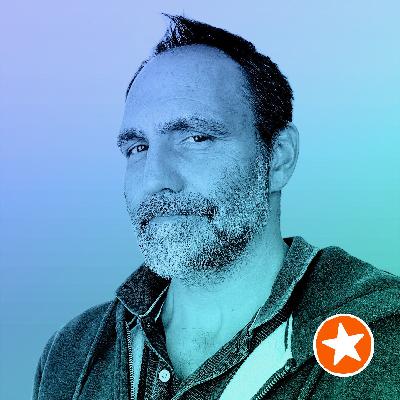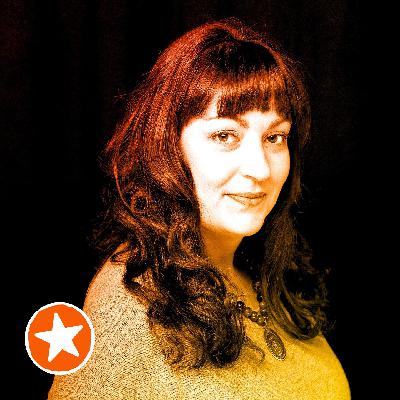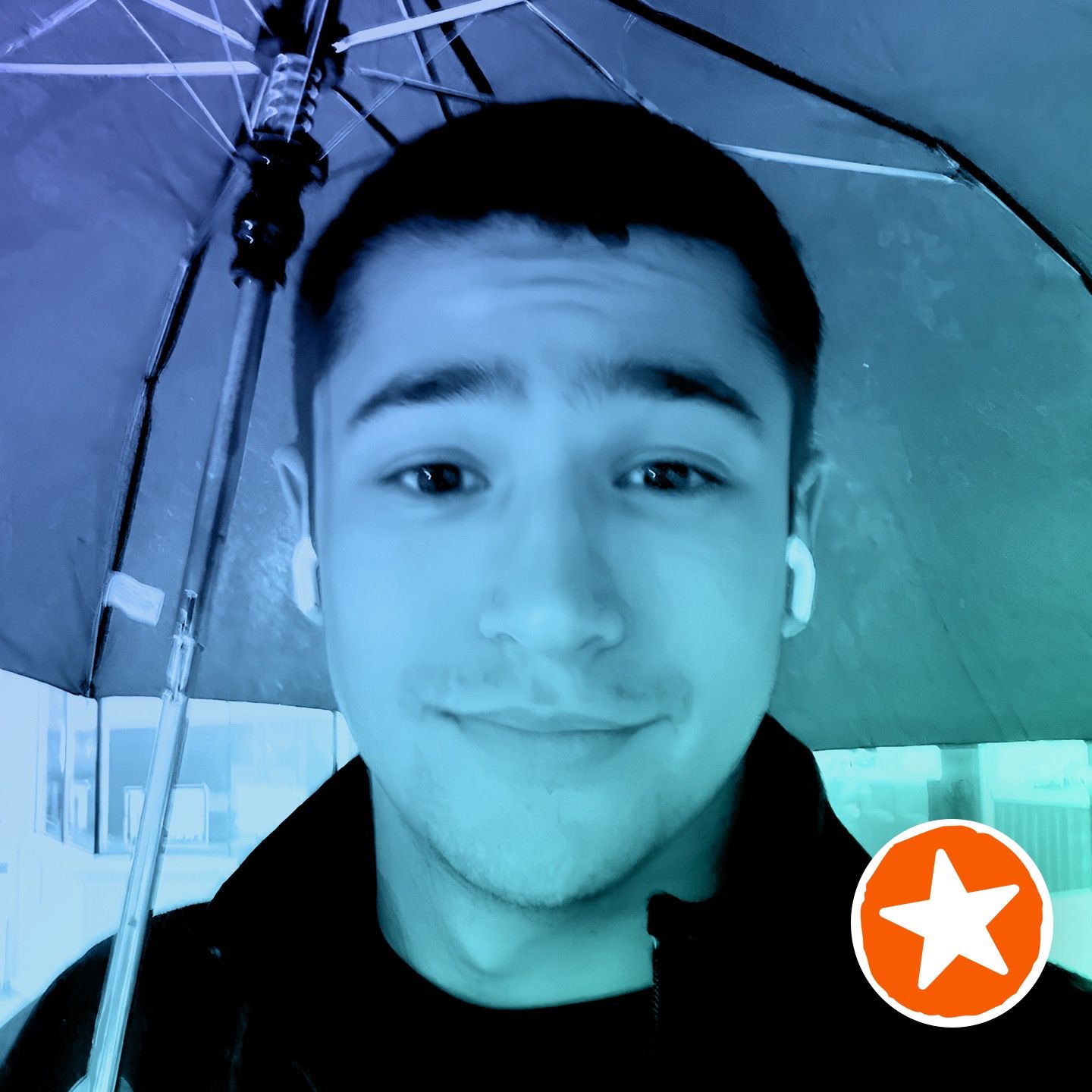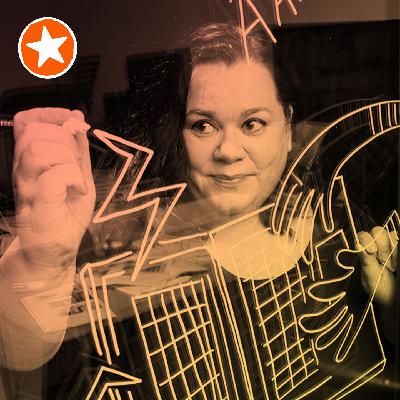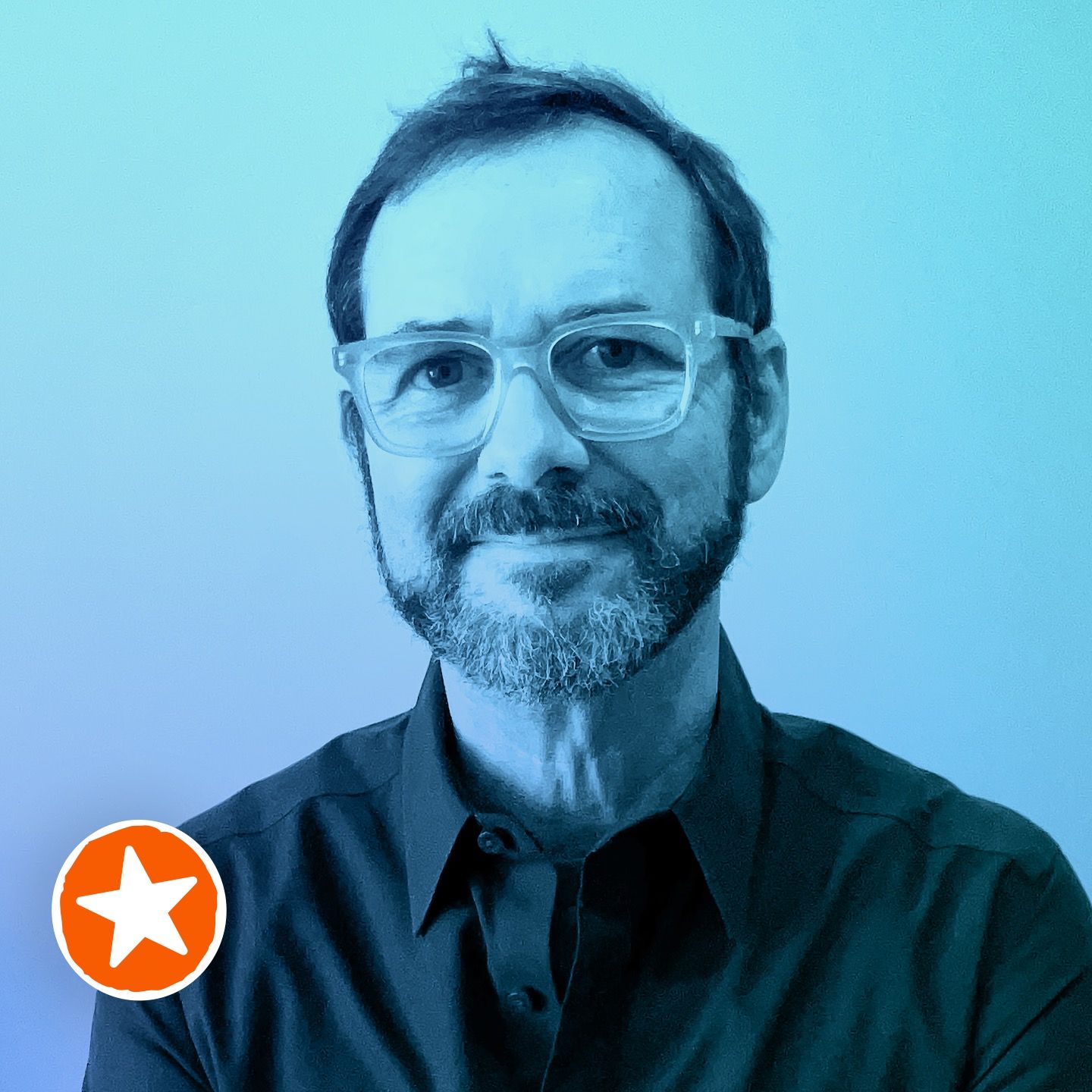Julian Kücklich transforms ideas into visual narratives - S15/E09
Description
In this episode, Julian Kücklich shares his journey—from childhood, where drawing was an innate talent, to academic pursuits and his discovery of design. Julian discusses how creativity and innovation provide visual solutions that blend storytelling, graphic recording, and visual strategy effortlessly.
Sponsored by Concepts
This episode of the Sketchnote Army Podcast is brought to you by Concepts, a perfect tool for sketchnoting, available on iOS, Windows, and Android.
Concepts' vector-based drawing feature gives you the power to adjust your drawings, saving hours and hours of rework.
Vectors provide clean, crisp, high-resolution output for your sketchnotes at any size you need s ideal for sketchnoting.
SEARCH in your favorite app store to give it a try.
Running Order
- Intro
- Welcome
- Who is Julian Kücklich?
- Origin Story
- Julian's current work
- Sponsor: Concepts
- Tips
- Tools
- Where to find Julian
- Outro
Links
Amazon affiliate links support the Sketchnote Army Podcast.
Tools
Amazon affiliate links support the Sketchnote Army Podcast.
- Neuland markers
- Black Foamboard
- Black Cardboard
- POSCA Acrylic Markers
- MOLOTOW Acylic Markers
- Pentel Brush Pens
- Amsterdam Notebooks
- iPad Pro
- Apple Pencil
- Procreate
- Concepts
Tips
- Work with shapes, mix them up, and find new ways of combining them.
- Shift from noun to verb. If you find it hard to draw something, it's often easier to draw a verb that goes with it.
- Always carry a pen and some thread. If you need to draw a large circle, that's the easiest way to make that happen.
Credits
- Producer: Alec Pulianas
- Shownotes and transcripts: Esther Odoro
- Theme music: Jon Schiedermayer
Subscribe to the Sketchnote Army Podcast
You can subscribe to the podcast through iTunes, Google Podcasts, Spotify, Amazon Music, YouTube or your favorite podcast listening source.
Support the Podcast
To support the creation, production and hosting of the Sketchnote Army Podcast, buy one of Mike Rohde’s bestselling books. Use code ROHDE40 at Peachpit.com for 40% off!
Episode Transcript
Mike Rohde: Hey everyone, it's Mike, and I'm here with Julian Kücklich. Julian, it's so good to have you on the show.
Julian Kücklich: Great to be here, Mike.
MR: Yeah, I've seen your work so much. Again, to guests I've talked to, LinkedIn seems like the place I'm finding really fascinating people posting things. And I've asked people, and I can ask you too, is there something going on in LinkedIn or is it just that I've trained the algorithm to give me what I wanna see? Do you have a sense of what's going on there?
JK: Well, I think, you know, LinkedIn has become much more popular in Europe in recent years. When I joined LinkedIn, which was 10 years ago, I was just reminded that it was my LinkedIn anniversary maybe three, four weeks ago, it was hardly used. People in Germany especially used a platform called Xing.
MR: Yes, I remember Xing. Yeah.
JK: Yeah. And so, that seems to have dropped off the radar and people are doing much more on LinkedIn. So that might be one of the reasons that you see more content from creators in Europe at least on LinkedIn now.
MR: Hmm. Interesting. I'm sure the algorithm must have something to do with it, but anyway, if you are listening and you're not on LinkedIn or you haven't really paid attention there, go check it out. It seems like there's lots more graphics. I think in a way, it's got a nice blend of visual capability. So like visuals attract people, but it crosses over with business. So, people who are looking for either some kind of impact or I guess getting work from it, it's a natural place to be if you're a graphic recorder professionally.
In my case, I just like to share what's going on, and I do some teaching so that it opens the opportunity for people to find out about classes I might be teaching. But it definitely seems to be more visual. Anyway, that aside, Julian, tell us who you are and what you do, and then let's jump right into your origin story right after that. All the way from when you were a little boy till now, tell us like, what were the key moments, what were the things you did as a kid? All those kinds of things.
JK: All right. That's gonna be a long story.
MR: Good.
JK: Just to get us started, I've been working as a graphic recorder for about 10 years now. Well, actually it's a bit longer, but I went full-time freelance in 2014, so it's almost exactly 10 years ago. Well, you know graphic recording is becoming less and less important in my business. I do a lot of strategy mapping or strategic illustration as I like to call it. So I work with clients on visual representations of their strategy or their goals or their values.
And those often have a basis in graphic recording. I often like to kick off these processes with workshops where I do graphic recording, but then I take the results of that back into my studio, and then I work on the illustration and fill up the details, and then make changes. So it's a longer and more involved process than the pure live graphic recording that I did for the first, you know, six or seven years of my career almost exclusively.
MR: Hmm. Interesting. A question that sort of pops into my mind as you talk about this. So do you find, so typically graphic recording, at least traditionally is a large board, foam board, paper, something, and it's in a room, so people are kind of immersed in it in a sense? So when you go back and do the strategy work, do you find it's important to reframe it in a more consumable size?
This is a very specific question. So in other words, do you come back with a report that's A4 printable or, you know, something like that? Or does it come back as a large board again, but maybe more like, you know, you boiled the stew and then now it's a really tasty kind of a thing?
JK: I must say I find it really hard to produce something that's printable on an A4 paper because there's usually so much detail that—you know, a lot of that gets lost when it gets printed in such a small size. So I try to encourage my clients when they share it, either view it on a big screen or print it in a large format so detail is really there and they can, you know, focus on specific areas of what they're interested in at that moment.
I think size is really an important and often undervalued aspect or quality of, you know a graphic or an illustration. It really adds to the quality if it is large and if the viewer can actually immerse themselves into the graphic.
MR: Right. Yeah. It seemed to me like that would be a curious, with this opportunity to compress, there might also be a desire to reduce size, but it sounds like that's not the case. Maybe it's slightly smaller, but still, quite a large scale because I suspect in that strategy work and the amount of information you're taking in, it would be difficult to fit it in a small size. You need the space to really represent all the components and the interactions and interrelationships, I suppose.
JK: Absolutely.
MR: Yeah. Interesting. Anyway, so that's just a curiosity as we—I guess in this episode, it seems like I'm interrupting you to kind of ask for more details, which I guess is okay, but continue.
JK: Perfectly. I guess the next question is how did I get there?
MR: Yeah.
JK: And that's really a very long and complicated story because I didn't start out as an illustrator or a graphic artist like a lot of other graphic recorders do. In my experience, you know, they either come from a visual background or from a coaching background, and I have neither. I started out studying German and American literature in university. And then I kind of switched over to media studies and I did a lot of research on video games.
MR: Hmm. Interesting.
JK: Actually published a lot of papers on video games and gave a lot of conference presentations on video games, and actually did a PhD about global production networks—
MR: Wow.
JK: - in relation to computer games. So, you know, that was a big part of my life up until my mid-30s. And then I had a teaching job in Berlin actually teaching game design. And then I decided that you know, academia wasn't really my thing. I mean, I liked the teaching, but I didn't like the bureaucracy. I didn't


